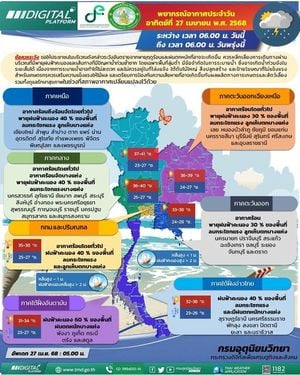In a remarkable discovery that highlights the wilderness of Brazil, a team of 15 wildlife experts recently unveiled a new species of anaconda, identified as the northern green anaconda, formally named Eunectes akayima. This significant finding was made in February 2025 near the Formoso River in Bonito, located in the state of Mato Grosso do Sul. The astonishingly large serpent, affectionately dubbed Ana Julia, measures an impressive 26 feet in length and weighs around 440 pounds.
The team behind this groundbreaking discovery consists of international wildlife biologists, among them prominent figures such as Professor Dr. Freek Vonk. The researchers established that the new species diverges genetically from the southern green anaconda, Eunectes murinus, by a substantial 5.5%. This genetic difference allowed them to classify it as a distinct species.
This rare creature was found deceased in the pristine river area, and its discovery was truly a collaborative effort of dedicated scientists and researchers who have shown a commitment to uncovering the natural wonders of the region. Professor Vonk proudly stated, “What a size - thick as a car tire and with a head the size of my own, it’s hard to estimate its length, but just looking at my height you can see it’s truly a giant!”
The discovery is not just exciting for the biologists; it stirs the scientific community's interest in large reptiles and their ecological presence. Wildlife expert Christian Dimitrius remarked that it was indeed the same snake filmed with Professor Vonk earlier, bringing joy to Aysha Juliana and reminding everyone of the value of patience and persistence in wildlife research.
While green anacondas are already known for their impressive hunting capabilities, the northern green anaconda's unique genetic traits add a new layer of significance to their biology. These snakes are recognized for their ability to seize prey by constricting and swallowing it whole, showcasing nature’s raw power.
The successful identification of the Eunectes akayima not only provides insights into the biodiversity of the Amazon region, but it also highlights the importance of conservation efforts within these ecosystems, especially given ongoing threats from deforestation and habitat loss. As research such as this continues, scientists hope to learn more about how best to protect these enigmatic creatures.
In the wake of their discovery, the researchers encourage a concerted effort to safeguard not just the newly identified species but the wider ecosystem. “It’s vital for us to ensure these habitats are preserved,” stated Vonk, stressing that every contribution to wildlife like the green anaconda is essential for maintaining ecological balance.
The story of Ana Julia is dubbed by many as one of the highlights of recent expeditions in wildlife science, proving once again that nature has a way of enthralling scientists and enthusiasts alike. The innovative teamwork of the research team encapsulates the spirit of exploration and the thrill of discovery.
This new identification sets a precedent for further investigations into other potential undiscovered species lurking in the Amazon rainforest, inviting future expeditions to pursue the untold stories hidden in the wild.
As the world continues to grapple with climate change and environmental challenges, every new revelation serves as a reminder of the intricate beauty of our planet and the necessity to protect it. Researchers are hopeful that their findings will inspire new conservation initiatives aimed at preserving the rich biodiversity that thrives within Brazil's enigmatic landscapes.
The brilliant minds behind the discovery of the northern green anaconda are optimistic about the ongoing research and conservation dialogues in the region. It reflects a larger commitment to understanding the environmental challenges and the urgent need to mitigate impacts on wildlife. As the tale of Ana Julia unfolds, it will undoubtedly remain a touchstone for further discourse surrounding wildlife preservation and environmental sustainability.




